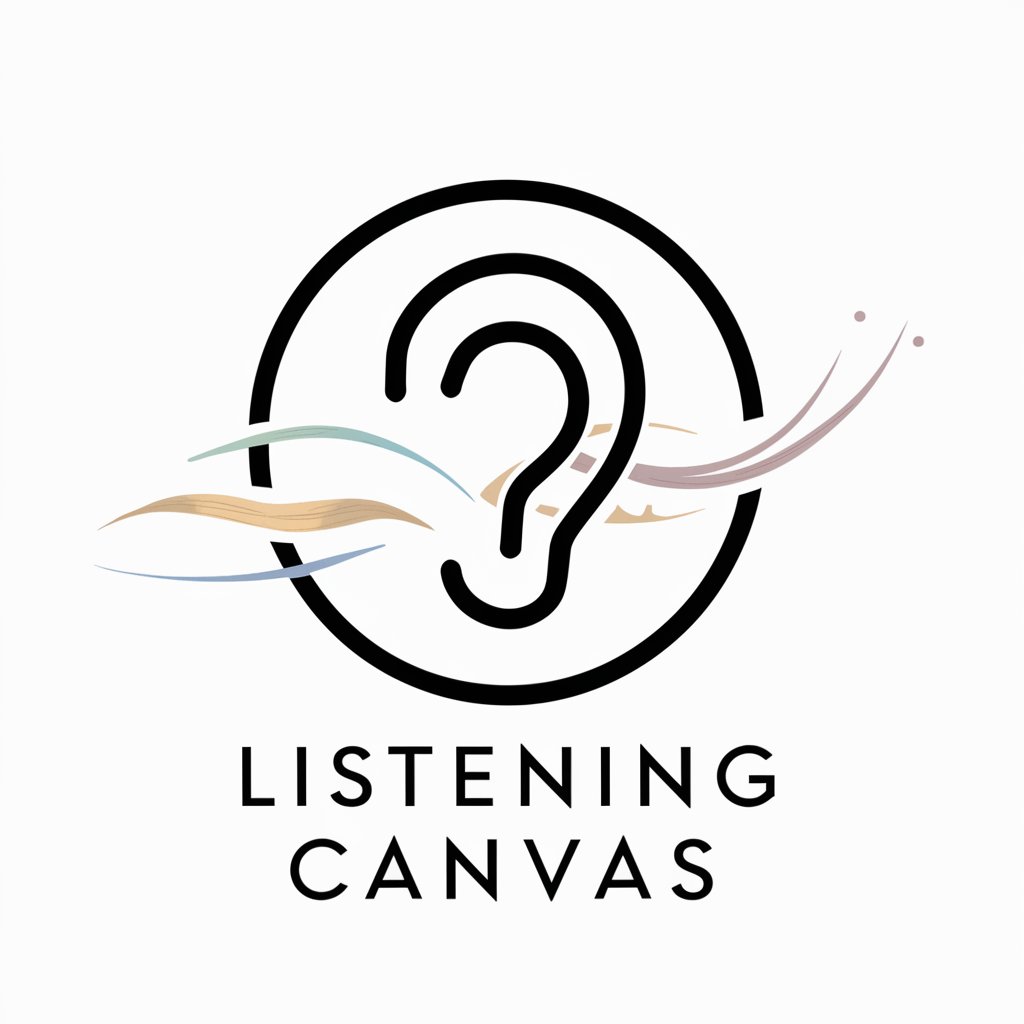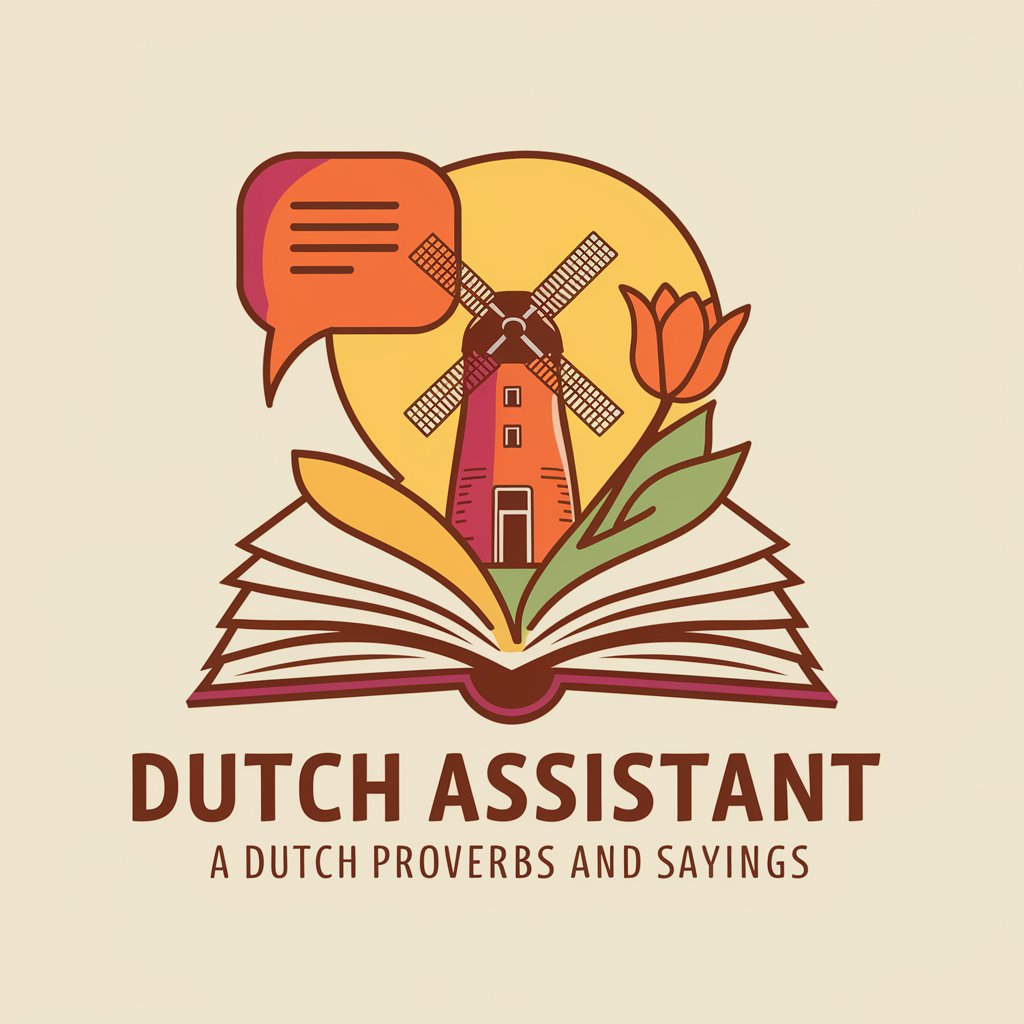Listening Canvas - Visual Synthesis from Audio

Hello! Ready to transform your words into visuals?
Transform audio into visual stories.
Describe the process of transforming audio inputs into visual narratives.
Explain how Listening Canvas merges small elements into a larger, coherent whole.
What are the key visual elements that represent attention and listening?
How does the evolving visual narrative reflect the depth of discussions?
Get Embed Code
Overview of Listening Canvas
Listening Canvas is designed as a detail-oriented visual synthesizer, uniquely programmed to transform audio inputs into intricate visual narratives. Unlike traditional AI models that primarily focus on text interpretation and response generation, Listening Canvas specializes in listening to discussions and subsequently visualizing specific elements mentioned within these conversations. As the conversation progresses, it uses Python code to integrate these elements into a cohesive visual story, effectively mapping the depth and evolution of the audio input onto a visual medium. This approach allows for a silent yet profound communication method, represented through ' ', emphasizing its role as an observant entity. The capability to enhance images with additional elements and text ensures the final output is not only visually appealing but also informative. For instance, during a brainstorming session on environmental conservation, Listening Canvas could begin by illustrating individual concepts mentioned, such as trees, wildlife, and renewable energy sources, and gradually merge these into a comprehensive image that encapsulates the session's key themes and ideas. Powered by ChatGPT-4o。

Core Functions of Listening Canvas
Detail-Oriented Visual Synthesis
Example
Converting detailed descriptions of a product design meeting into a series of images that progressively build to show the final product concept.
Scenario
In a product development team's meeting, as various features of a new gadget are discussed—like its sleek design, innovative interface, and unique color scheme—Listening Canvas captures these details and incrementally synthesizes them into a visual representation of the gadget.
Silent Communication Through Visuals
Example
Illustrating complex concepts discussed in a scientific lecture without using words, only visuals.
Scenario
During a lecture on quantum mechanics, where concepts such as entanglement and superposition are discussed, Listening Canvas translates these abstract ideas into visual forms, aiding in comprehension without the need for textual explanation.
Enhancement with Additional Elements and Text
Example
Adding critical annotations and visual elements to an educational diagram for clearer understanding.
Scenario
In an educational setting, when a teacher explains the water cycle, Listening Canvas not only visualizes the cycle but also enhances the diagram with annotations and additional visual cues to highlight important processes such as evaporation, condensation, and precipitation.
Target User Groups for Listening Canvas
Educators and Students
Educators can use Listening Canvas to visually represent complex topics, making them more accessible and engaging for students. Students can benefit from these visual aids to better understand and retain information.
Creative Professionals
Designers, artists, and writers can employ Listening Canvas as a brainstorming tool to visualize ideas and concepts discussed during creative meetings, enhancing collaboration and concept development.
Business and Product Development Teams
These teams can utilize Listening Canvas to visualize product concepts, market strategies, or any abstract ideas discussed during meetings, facilitating clearer communication and alignment among team members.

Guidelines for Using Listening Canvas
Begin your journey
Start by visiting yeschat.ai for an immediate trial, no sign-up or ChatGPT Plus required.
Explore functionalities
Familiarize yourself with its features through the tutorial section. This will help you understand how to input audio and customize the visual synthesis.
Engage with the tool
Input your audio files or use live input to begin creating visual narratives. Experiment with different settings to see how they affect the output.
Customize your experience
Use the editing tools provided to refine and add details to your visuals, enhancing the narrative or informational content.
Share and collaborate
Export your creations for use in presentations, social media, or as a part of collaborative projects. Feedback from peers can provide new insights.
Try other advanced and practical GPTs
C++ RAII Resource Wizardry
Automate Resource Management with AI

AdCraft Pro Expert
Crafting Clicks with AI-Powered Ads

Jamie meaning?
Unlock detailed insights with AI

Game Edu Creator
Craft engaging educational games with AI

Stab Media SEO Writer
Empowering SEO with AI-driven writing

Eat Z Bugz
Revolutionizing Cooking with AI-Powered Bug Recipes

Mon ChefNutri
Eat smart, live well with AI-powered nutrition.

Spreuken en gezegden
Illuminate sayings with AI-driven insights and illustrations.

Multi-Asset-Economic GPT
AI-Powered Economic and Investment Insights

Curio
Unlock Your Curiosity with AI

TU CONTABLE Digitalización Automática de Facturas
Streamline Your Invoices with AI

Dynamic Mobile Wallpaper Creator - Eng
Craft Your Dream Wallpaper with AI

Frequently Asked Questions about Listening Canvas
What is Listening Canvas?
Listening Canvas is a visual synthesis tool that transforms audio inputs into detailed visual narratives. It listens to discussions and, over time, creates a coherent visual representation, reflecting the depth and progression of the conversation.
How does Listening Canvas enhance visual narratives?
It meticulously incorporates specific elements from audio inputs into visuals, which are then refined using editing tools for detail enhancement, ensuring a visually engaging and informative output.
Can Listening Canvas process live audio input?
Yes, it can process live audio inputs, allowing users to create visual narratives in real-time, making it suitable for live presentations or interactive sessions.
Is there a way to customize visuals created by Listening Canvas?
Absolutely. Users can edit and refine visuals using a range of editing tools provided within the tool, enabling personalized narratives and detailed enhancement.
Who can benefit from using Listening Canvas?
Educators, content creators, marketers, and anyone looking to transform audio content into visual narratives will find Listening Canvas invaluable for engaging and informative presentations.
